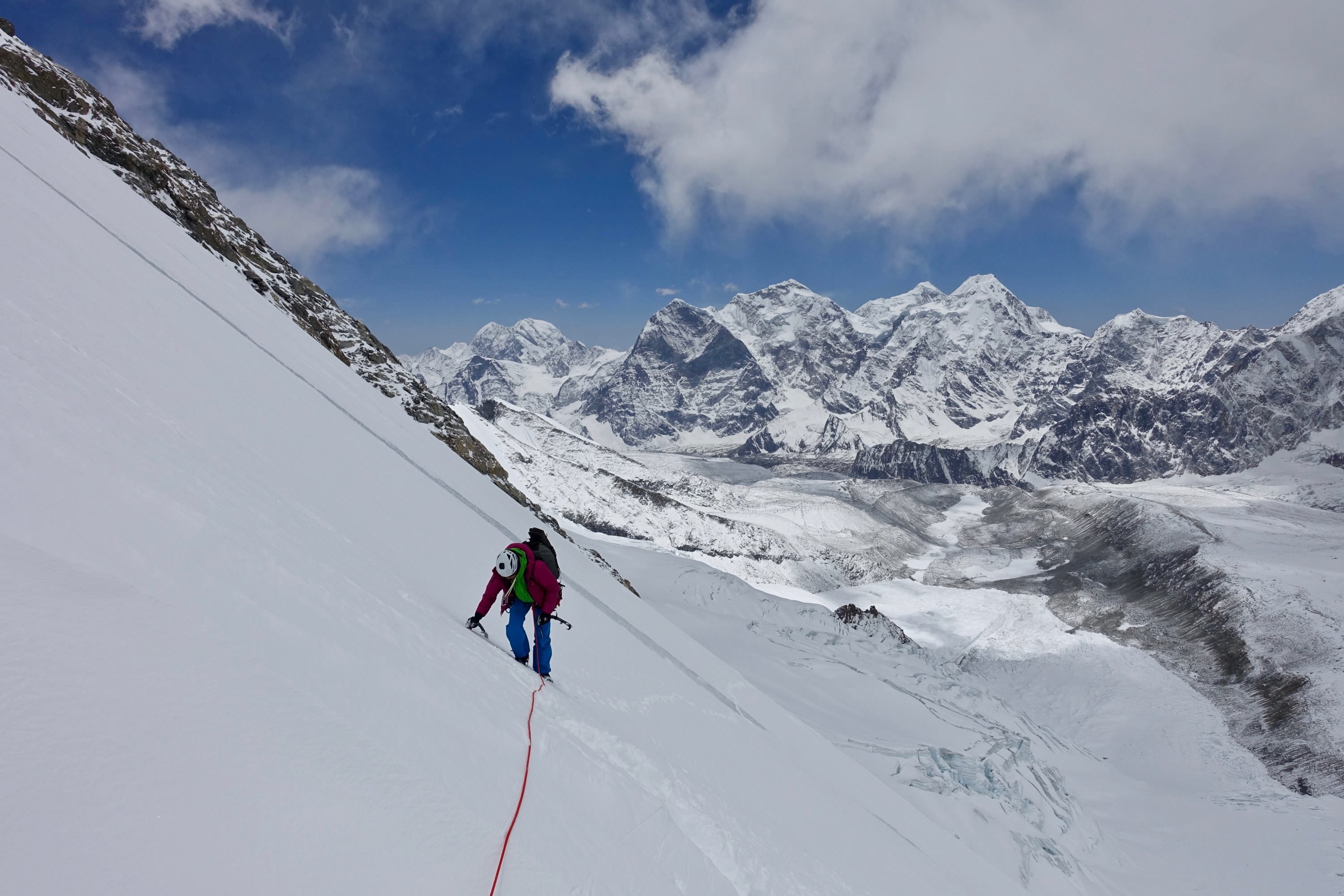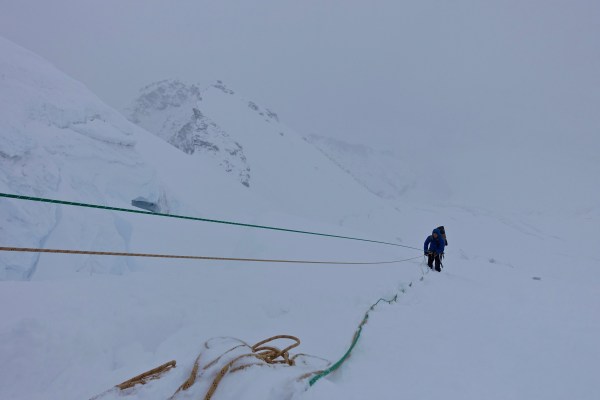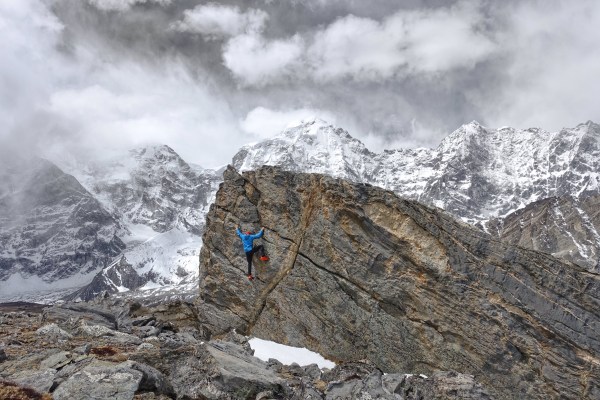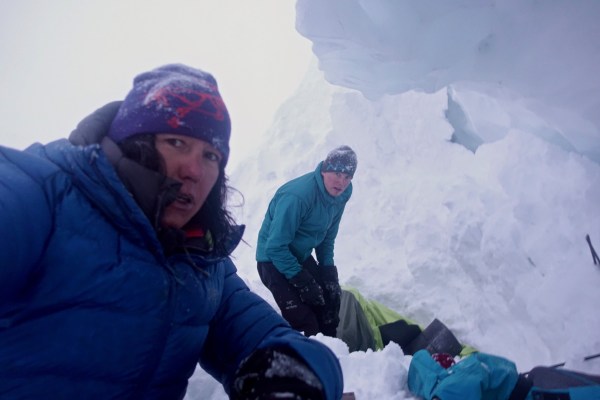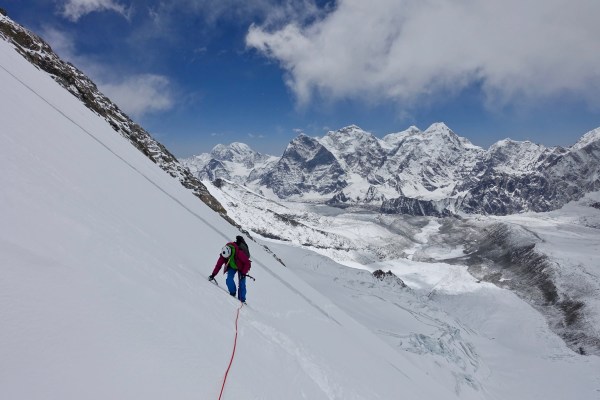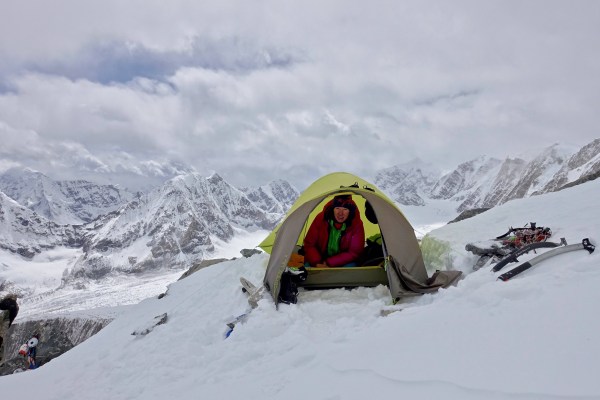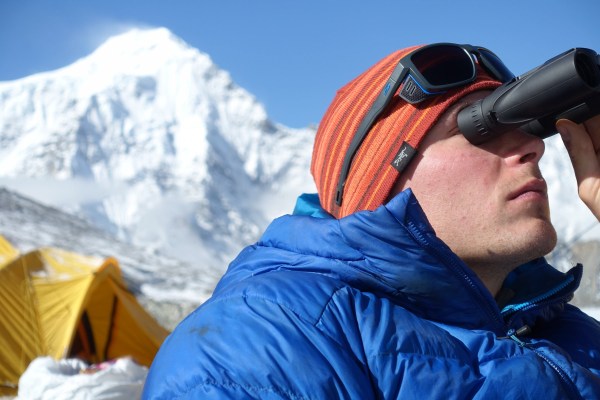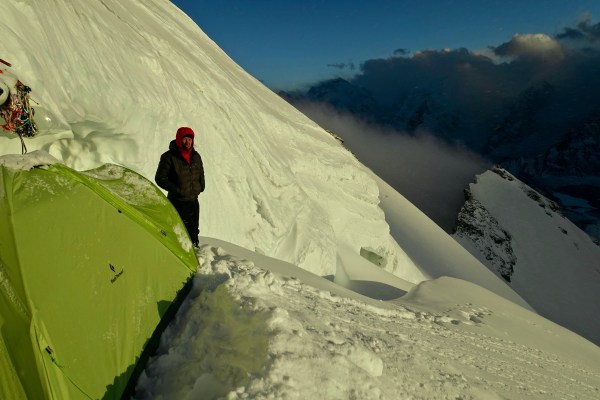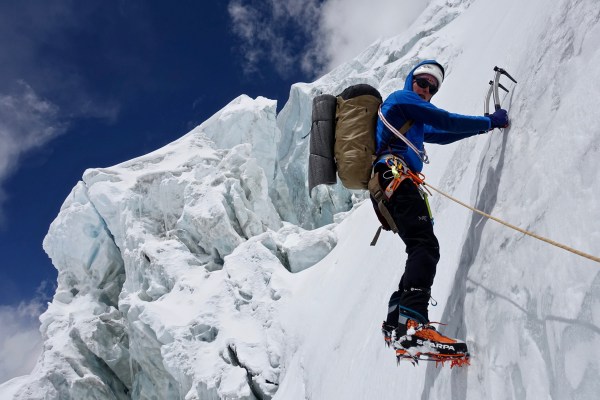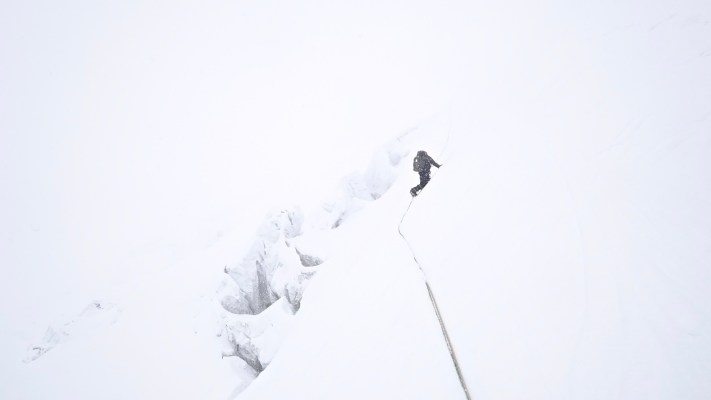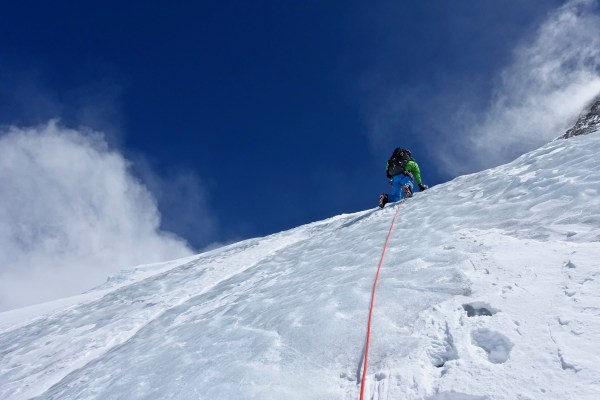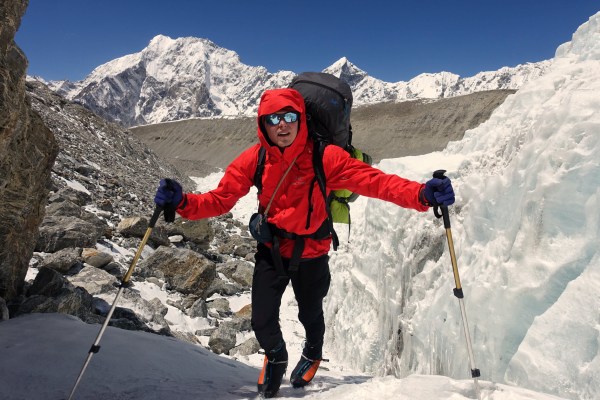Bodytext
words by Ines Papert
The expedition to the south face of Shishapangma with Luka Lindič had long been planned. It was to become my first 8000er. Luka had summited Broad Peak back in 2016. Only few teams attempt the difficult Shishapangma face. We were to be the only mountaineers on this side of the mountain in Tibet in 2018. We wanted to climb alpine style of course. We had support up to base camp at 5300m, which we reached on April17th with our cook Nima and our kitchen aid Carsong. From then on was just us. No sherpa, no fixed ropes, no bottled oxygen. We wanted to climb as a small team.

Attempt on Nyanang Ri (7071m)
We decided to attempt a new route on the neighbouring and very attractive Nyanang Ri (7071m) to get acclimatized. We planned to climb to the summit via the south flank, which is technically challenging in the upper part. We transported our gear to the mountain and waited for a two-day weather window. On April 30th the chances of low precipitation looked good. We got to work and reached second bivy at 6300m. We wanted to reach the summit in one push from there. But the night leading to May 1st turned into a crucial experience. We felt safe and well protected as we placed our small tent in a crevasse of the glacier below the flank. But the night brought continuous snowfall.

Crucial Experience at Camp 2
It was around 5 in the morning as the entire flank began to slide. An avalanche! We startled up from our sleep as we noticed what was going on. We immediately knew what was happening and realized the severity of the situation. While Luka left the tent via the entrance I ripped a hole in the wall of the tent in panic. The air was getting scarce so fast. The weight of the load of snow was already pressing on my body. We've had get out of here! Luka pulled me from the tent and we stood outside in our socks and had to watch our tent get swallowed under the snow load. Luka saved our shoes at the last moment. Otherwise we would have been trapped. We tried to recover from the shock in a small snow cave. There was nothing left to do but watch and wait until the situation calmed down. It was a full-moon night and we could see what had happened even without our headlamps.

What we realized fast: we were still trapped. Our ropes, ice axes, and part of our gear were buried with the tent. There was no way of retreating from the mountain without our gear. Luka started shoveling in a marathon and two hours later we pulled our belongings from our completely destroyed tent. An immediate descent and rapell in heavy snowfall was what followed. We each did what we had to do in silence. We didn't talk about what had just happened. Each of us tried to process what we had just experienced in any way possible.
Mountaineering as passion
We were under shock for days. But we decided to keep on going with our planned expedition. We're climbers and mountaineers. The reason for continuing after such an experience isn't something that you can explain rationally. We do what we do out of passion. Even though we did question what we do during these days repeatedly. But if we stop doing what we love so much we cease to be ourselves. But how do you cope without constantly panicking? Many talks followed that lead to the result that we would stay. Though our actual goal of the expedition, Shishapangma, had somehow moved to the distant future already.
Some days later, having recovered from the shock of Nyanang Ri, they attempted another acclimatisation run on nearby Pungpa Ri (7450m), but because of the cold, the strong winds and the fact that the Papert didn’t feel 100% well they bailed. From that day on the weather never improved and they returned home a week earlier than planned.
New Goal: Pungpa Ri (7450m)

The yet unclimbed west face of Pungpa Ri (7450m), a neighboring summit of Shishapangma, became our next goal. But daily snowfall of up to 15cm made planning very complex. A temporary stable weather window was announced between May 11th and 13th with little chance of precipitation. Still, high winds and temperatures of -28 °C surrounding the peak were forecast. We climbed fast from base camp, left out establishing an ABC again and made it to an 80 degree steep flank at 6500m. We needed to be fast, the weather was to change soon and fresh snow was the last thing we wanted on this flank. We shoveled a platform half way in the wall where we pitched our replacement tent. We planned our ascent of the remaining 1000 vertical meters to the summit in one push on May 12th.
It was still dark as our alarm clock broke the silence in the sleepless night. The wind was tearing at our tent. I was hardly able to eat anything, something was gnawing at my intestines. I felt really bad. As I was putting on my climbing harness I felt the little strength I had leave my fingers. I asked myself how I could possibly make it to the summit. Still we climbed a bit higher. I soon realized I wouldn't make it. I had a terrible feeling of complete powerlessness. I felt so sorry for Luka who apparently had no problems with altitude or energy reserves. He took it lightly and announced our immediate descent.

Adverse Weather Conditions
We hoped that we'd have a stable weather window in mid to the end of May. But we saw our chances at climbing Shishapangma diminish daily. We weren't able to acclimatize sufficiently. In addition the conditions caused by daily precipitation made conditions extremely unstable and they seemed to stay that way. The fear that was left after our experience on Nyanag Ri was still stuck in our bones. So we decided to end our expedition.
We greatly thank our sponsors (Arcteryx, Lowa, Black Diamond, Alpine Association of Slovenia) and our families for their support and their trust. We are more than happy to know that all our partners stand behind our decisions. We would also like to thank the meteorologists Charly Gabl and Jure Jerman for their consultations regarding weather conditions.
